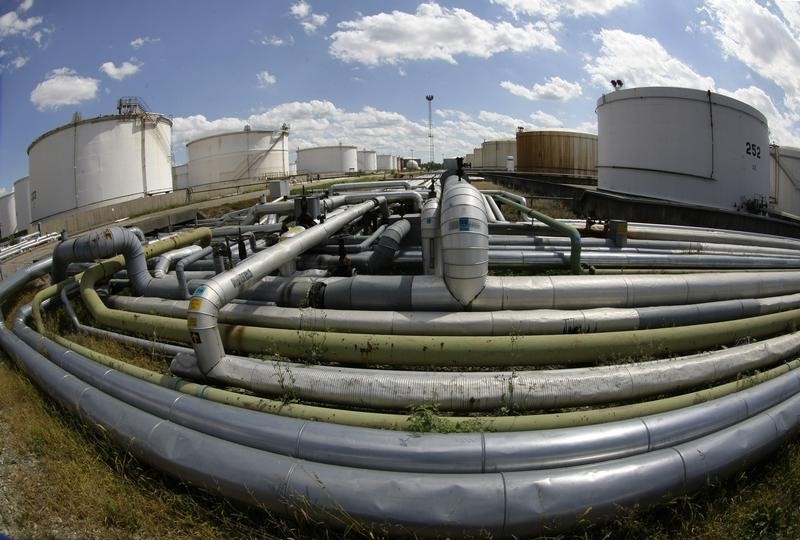By Barani Krishnan
Investing.com - Wall Street is trying to shake off the Coronavirus 2.0 terror, and oil is following suit.
Crude oil futures rebounded from losses of more than 5% to trade in the positive on Monday after White House Economic Adviser Larry Kudlow said President Donald Trump was determined not to close the U.S. economy again over a new surge in Covid-19 cases — despite the autonomy for such a decision resting with state governors.
"The President is absolutely disinclined to shut down as is the vice president," Kudlow told the Fox News network. "“I think shutting down the economy could be worse for our health than not shutting it down. When you look at the overall numbers and these specific new cases, it’s still rock-bottom and has flattened. We’re watching it very carefully.”
Kudlow spoke as 20 of the 50 U.S. states, including Texas, South Carolina, Utah, Arizona, North Carolina, Arkansas, Alabama, Oregon, California, Nevada, and Florida reported seven-day rolling average highs for new Covid-19 infections. The total number of cases since the February outbreak now stands at 2.2 million.
New York-traded West Texas Intermediate, the benchmark for U.S. crude, was up 44 cents, or 1.2%, at $36.70 per barrel by 1:40 PM ET (17:40 GMT). It fell as much 5.2% earlier.
London-traded Brent, the global benchmark for oil, gained 71 cents, or 1.8%, to $39.44. It lost 3.8% at the lows of the session.
WTI and Brent both lost just over 8% last week for their worst weekly decline since mid-March. Prior to that, oil had traded virtually one way over six weeks, with WTI gaining 300% at one point from an April bottom of around $10 while Brent showed a 170% rise from a low of beneath $16.
Despite those gains, both benchmarks remain down about 40% on the year.
Monday’s rebound in oil came after Wall Street’s Dow pulled back from a drop of more than 2% earlier to trade just about a quarter percent down at the lunch break.
Crude futures also recovered from their lows on reports that Iraq was living up to its bargain on OPEC+ production cuts, with a commitment to cut at least 15% of its oil exports in June.
“Oil prices are mirroring U.S. equities as lingering virus concerns weigh on the outlook for crude demand,” said Ed Moya, an analyst at New York’s OANDA.
“WTI crude is likely to struggle to break out of its $34-40 range anytime soon. But renewed optimism about OPEC+ production cuts could remain in place too if we see a second wave of Covid-19 concerns intensify as oil producers will refuse to let the market enter into another free fall.”
Besides the virus and shutdown worries, deteriorating demand fundamentals had also weighed on oil since last week.
U.S. crude inventories grew by 5.72 million barrels during the week to May 5 to reach a record high of 538 million barrels, according to data from the Energy Information Administration.
Distillate stockpiles, led by diesel, meanwhile, soared 1.6 million barrels during the week, and grew by a total of nearly 53 million barrels over nine weeks, EIA data showed.
For its data set on the May 12 week — due Wednesday — the EIA is expected to announce a crude build of 1.7 million barrels versus a previous build of 5.7 million, according to a consensus of analysts’ estimates tracked by Investing.com. Separately, Seevol.com reported that crude stockpiles at the closely-watched Cushing, Oklahoma, hub that serves as storage for oil delivered against expiring contracts, fell by 1.8 million barrels during the week to May 12.
Distillates are expected to have risen 3 million last week, double that of the previous week, according to analysts’ estimates of EIA data.
Gasoline stockpiles, the one bright spot on the oil complex so far, is expected to have risen by 71,000 barrels versus a previous build of 866,000 barrels.
